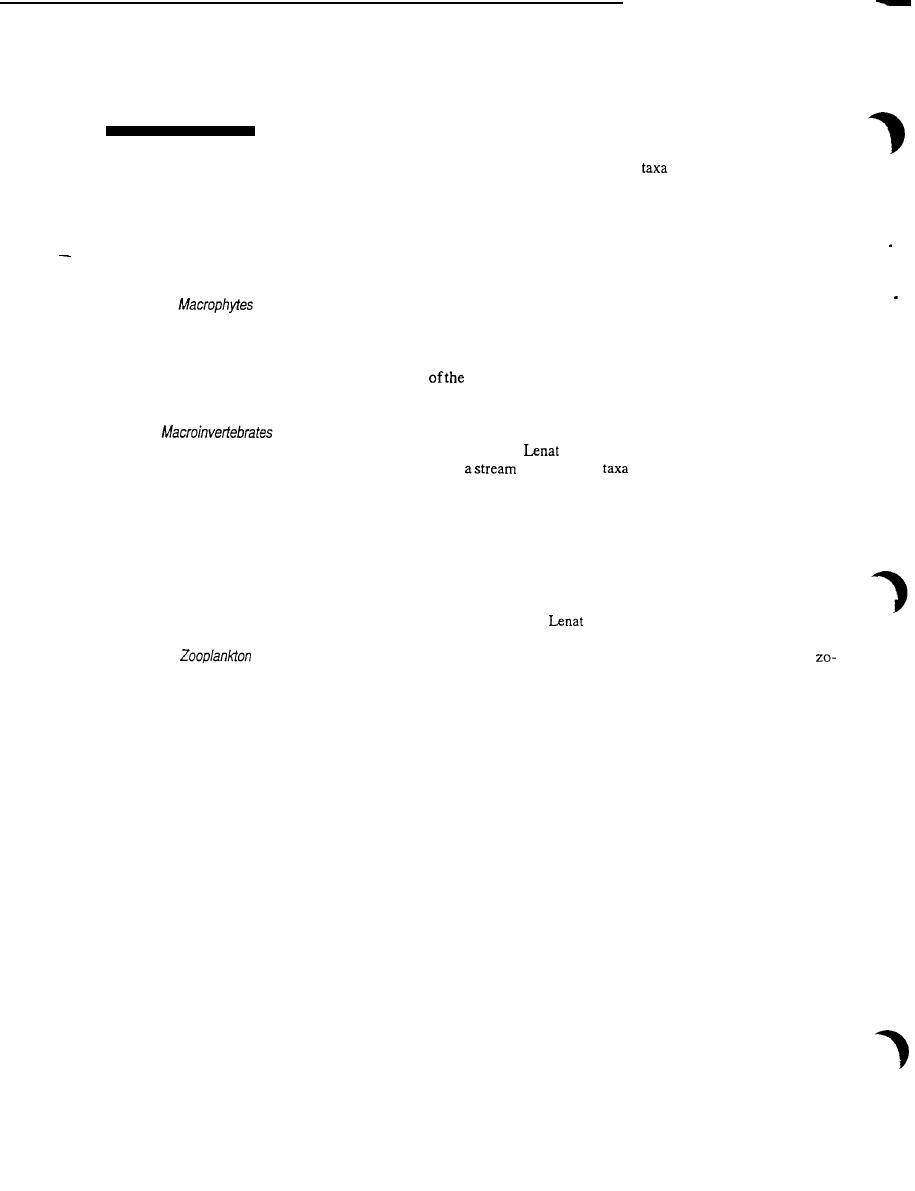
Monitoring Program Objectives
Variables to consider include the number of
and their abundance. For
estimating periphyton biomass or production, collections can be made using an
artificial substrate such as a glass slide. Also periphyton on rocks or logs may also
be sampled, but estimating production with this method is more difficult.
Periphytoncollected on artificial substrate may not mimic natural populations, but
they can be useful when an inadequate sample size is available on natural
substrates.
Macrophytes. Estimation of area1 macroinvertebrate biomass can be completed
by a diver taking standard area plot collections of plant tissue (Canfield and Duarte
1988; Kelly 1989). Species are determined and the sample is dewatered in a
standardized manner and weight. Area1 biomass should be estimated by its density
and theextent
species. Variation inspeciesand biomass may be due to depth,
wind effects, substrate, time of year, and water column nutrients or light.
Macroinvertebrates. A qualitative protocol for macroinvertebrate sampling and
(1988). The protocol is based on monitoring
data analysis is presented by
multiple habitats at
station. More
are potentially collected than with
the kick net or Surber sampler.
The qualitative collection protocol uses coarse mesh samplers to monitor riffles,
snags, streambanks, and leaf packs. A fine mesh sampler may be used to process
samples from rocks, logs, and sand, and visual collections consist of picking
macroinvertebrates from large rocks or logs. Macroinvertebrates are separated
from organic matter and picked in the field or preserved. A description of the
method and testing of the protocol with kick samples and a water quality index
(chemical data) are presented by
(1988).
Zooplankton. Level II zooplankton work may to answer questions about
oplankton grazing and their effect on algal productivity, or zooplankton as a
source of food for fish. Patterns of seasonal succession are likely to play an
important role. The relative importance of zooplankton on lake productivity
should be assessed to determine the proper emphasis of this group in the efforts
and budget of project monitoring.
Fish. The fish species, type of water resource, habitat conditions, and variable of
interest will determine the best monitoring methods. Hocutt and Stauffer (1980)
provide examples of fish monitoring methods in streams, reservoirs, and lakes.
Other fish variables may be the presence/absence or abundance of individual
species, density orbiomass. Recruitment success and population size structure can
be determined yearly based on the length-frequency distribution
The IBI (Karr et al. 1986) may also be used for level II monitoring, especially if
individual metrics are chosen or developed. Generally a level I procedure and
enumerations could replace ratings to produce more quantitative data.
Fish spawning environment. The reproductive success of fish can depend
heavily upon the condition and quality of the spawning substrate and interstitial
and overlying water. Recent testing of embryo survival in simulated spawning
environments has been conducted- for stream salmonids habitats of the West
(Burton and Harvey 1990).
3.19



 Previous Page
Previous Page
